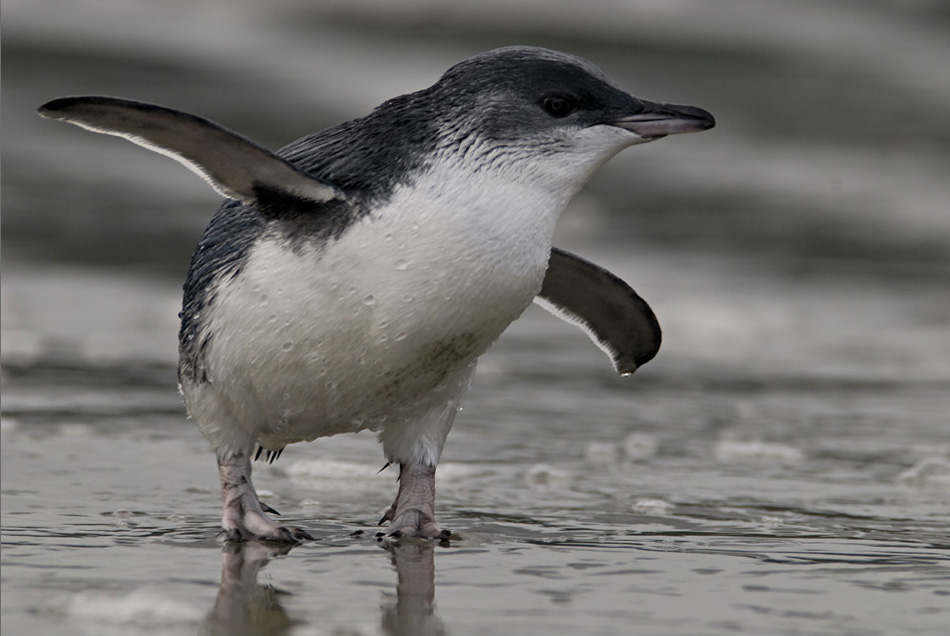Swell
Blogger: Campaign Manager for the Little Blue Penguin, Stephanie Gray.
Like dinosaurs and the solar system, penguins seldom fail to capture the imagination of children first introduced to the strange bird with an upright waddle and sleek feather coat.

Little Blue Penguin, Photo: Craig McKenzie
The Antarctic Emperor penguin is arguably the most familiar of species, beloved for its tuxedo of black and white feathers, and as the star of a movie or two.
Every bit as interesting, but yet to break into Hollywood, is New Zealand’s Little Blue Penguin—the Kororā. Everyday tens of thousands of New Zealanders unknowingly walk past the Little Blues, the world’s smallest penguin, nestled in the rocks and burrows along coastal and harbour walkways.
It’s not because the birds are hiding that people miss them. Little Blues bark, bray and croon and are generally quite chatty for a bird that stands to a maximum of height of 43cm.
And it’s not as if people can’t smell them—to quote Jenny Lynch from Forest & Bird, Little Blues can be quite stinky in a “we-eat-fish kind of way”.
They are brilliantly camouflaged, but only when they’re at sea when their light-coloured belly and slate-blue plumage blends with ocean hues. It may just be that people and penguins generally work different hours. Little blues spend their days swimming and eating fish, squid and crustaceans, leaving their burrows at dawn and returning to feed their chicks at dusk when most people are at home feeding their own families.
Found on Wellington’s south coast, in Oamaru, Mount Maunganui and on Auckland’s west coast beaches among other places, the Little Blue Penguin also lives on the southern Australian coastline, where the locals call them ‘Fairy Penguins’.
The birds live year-round in colonies, and tend to breed in the same spot each year. For this reason, Forest & Bird launched the volunteer-based Places for Penguins programme in Wellington to protect the birds’ habitats and raise public awareness about the species’ vulnerability to traffic and dogs (among the usual predator suspects).
Places for Penguins volunteers have been busy over the past three months planting and weeding Wellington south coast bays where the birds live in preparation for the nesting season. With the assistance of Wellington Zoo, they’ve also put out many new nest boxes to encourage breeding.
At this time of year the Little Blues are either thinking about laying one or two eggs, or have already done so—hopefully in a nice dry plywood nest box and not under someone’s house at greater risk of cats, dogs and driveways.
If you think you have a penguin living under your house, or spot one in distress, call the Department of Conservation hotline for advice.
If you think you’d like to help the Little Blues, check out the Places for Penguins programme on the Forest & Bird website.
But most importantly, vote for Little Blues as Bird of the Year 2010!
